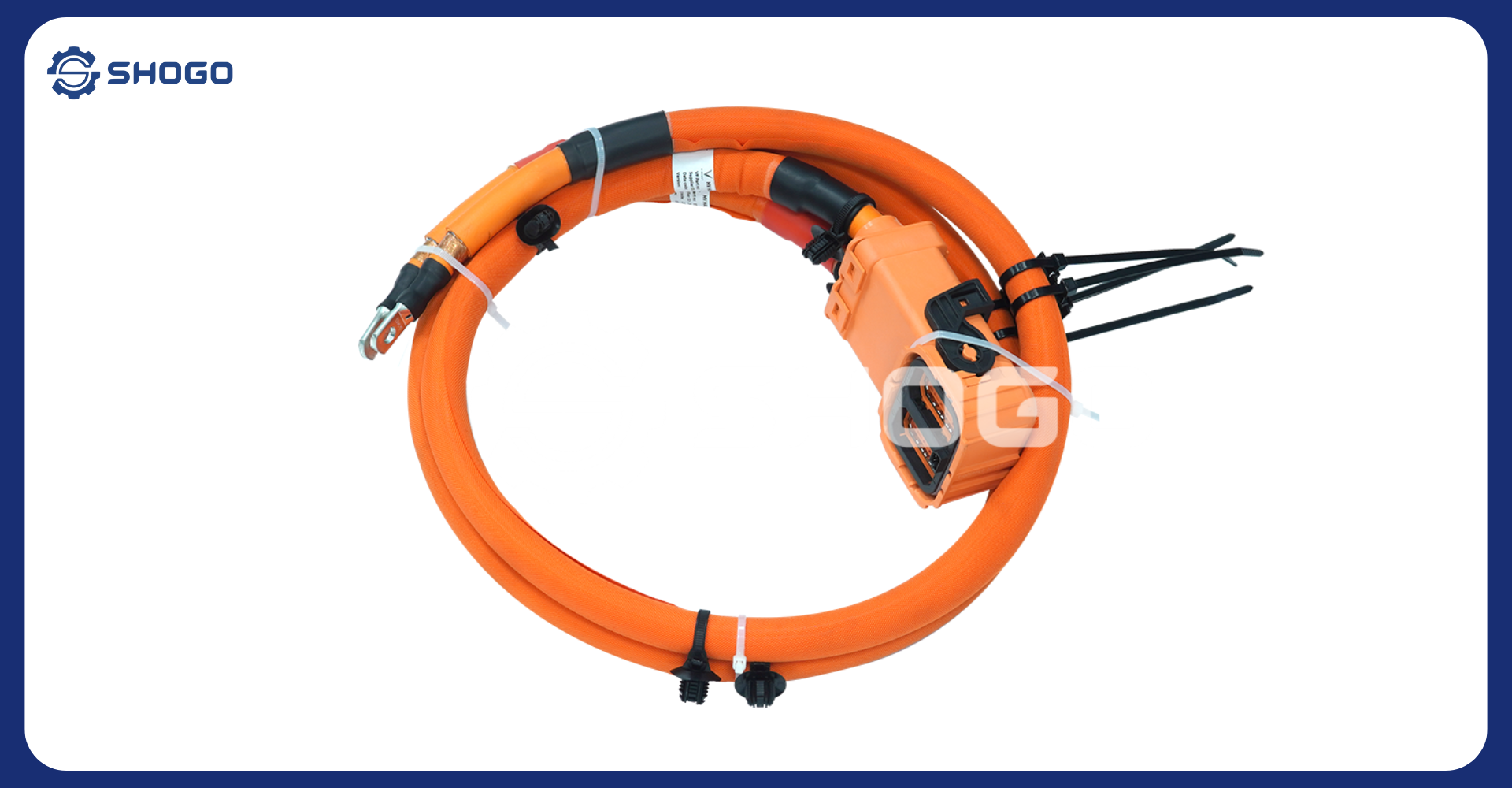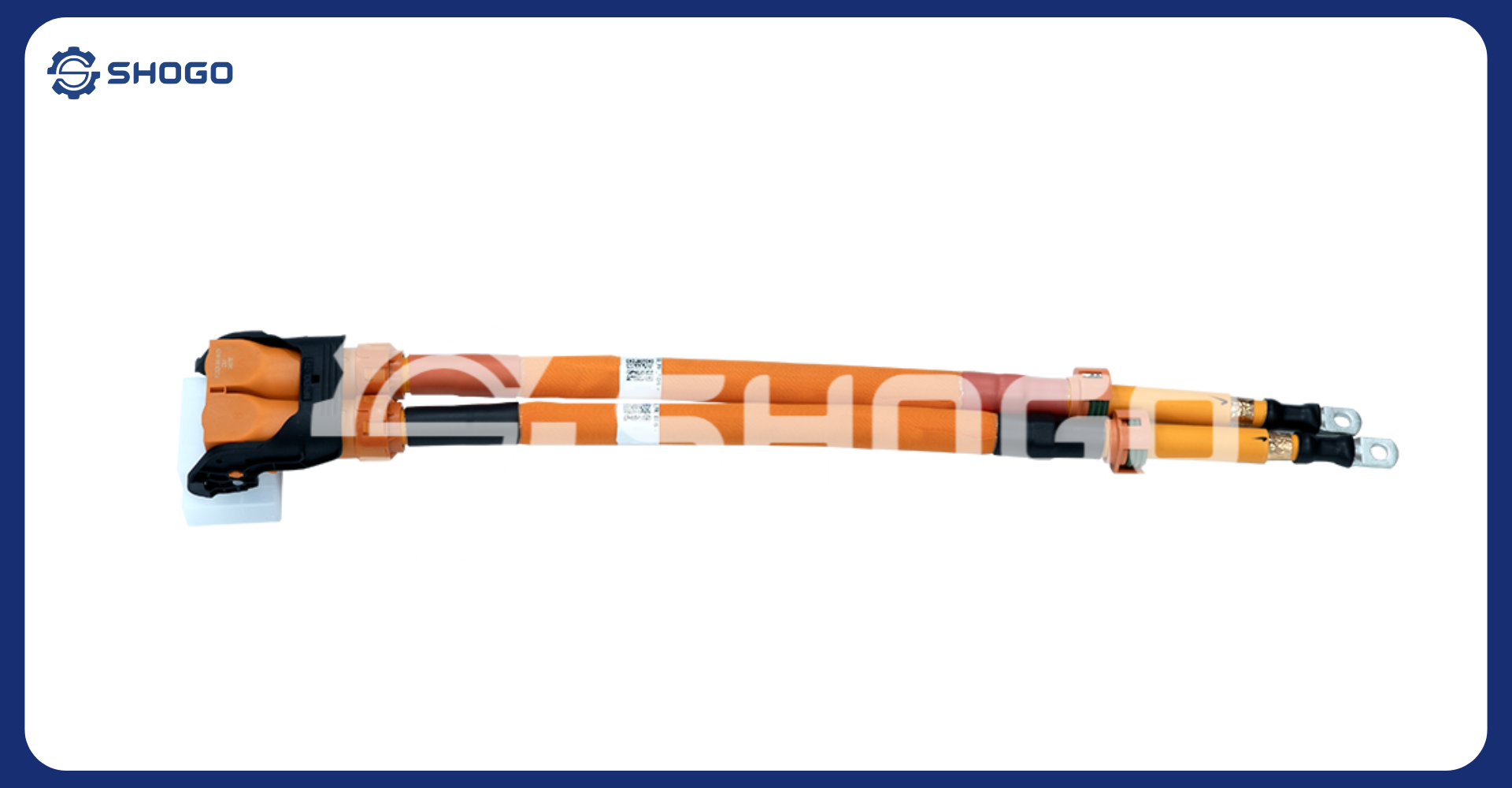
1. What Is an EVHV Cable?
EVHV Cable (Electric Vehicle High Voltage Cable) is a specialized cable designed for electric vehicles (EVs) to handle high-voltage power transmission—typically from 600V to 1000V or more—between key components such as:
- Battery Pack
- Inverter
- Electric Motor (E-Motor)
- On-board Charger
The EVHV cable acts as a power artery, delivering energy safely, efficiently, and reliably within the vehicle’s high-voltage system.
2. Why Do High-Voltage EV Battery Systems Need EVHV Cables?
Modern EV platforms operate at 800V to 1000V to reduce current, increase efficiency, and support ultra-fast charging. This requires:
- Cables that can withstand continuous high voltage
- Zero current leakage, arcing, or signal interference
- Resistance to heat, vibration, and fire in harsh conditions
→ Only purpose-built EVHV cables can meet these demanding requirements.
3. EVHV Cable Structure and Technical Features
| Component | Function |
|---|---|
| Conductor Core | Typically copper or aluminum, fine-stranded for flexibility and efficiency |
| Insulation Layer | Made of XLPE or silicone, offering high heat and voltage resistance |
| Shielding Layer | Braided copper or aluminum for EMI/RFI suppression and safety |
| Outer Sheath | Fire-retardant, oil-resistant, high-temperature materials like TPE or TPU |
Key Technical Specs:
- Voltage rating: 600V – 1500V DC
- Operating temperature range: –40°C to +150°C
- High flexibility for routing in compact vehicle spaces
- Excellent EMI/RFI protection for signal integrity
4. Standards for EVHV Cable Compliance
To ensure safety and performance, EVHV cables must comply with:
- ISO 6722-1 / ISO 19642: Automotive cable standards
- LV 216 / LV 112: (Daimler, VW, BMW) Vibration, thermal, and insulation tests
- SAE J1654 / J2840: High-voltage cable standards for EVs
- UL 758 / UL 62 / UL 44: Safety and insulation material certifications
5. Where Are EVHV Cables Used in EV Battery Systems?
| Connection Point | EVHV Cable Role |
|---|---|
| Battery → Inverter | Transfers high-voltage DC from the battery to the inverter |
| Inverter → Motor | Delivers converted AC to the electric motor |
| Battery → Fast Charger | Enables ultra-fast charging at high power levels |
| Battery → DC/DC Converter | Supplies power to low-voltage systems within the vehicle |
6. The Future of EVHV Cables: Lighter, Smarter, More Durable
As electric trucks, autonomous vehicles, and advanced battery platforms emerge, EVHV cables are evolving with:
- Ultra-light aluminum alloys to reduce vehicle weight
- Built-in temperature and current sensors for real-time monitoring
- Self-healing insulation layers to prevent long-term degradation
- Advanced shielding for autonomous driving electronics (ADAS)
Conclusion
EVHV cables are vital components in high-voltage EV battery systems. They don’t just transmit power—they ensure system safety, stability, and performance under extreme automotive conditions. Selecting the right cable, built to the correct standard, is crucial for any EV project.
Need EVHV Cables for Your Electric Vehicle Platform?
We provide certified EVHV cables meeting ISO, SAE, and LV standards, trusted by global EV manufacturers. Contact us now for expert consultation, samples, or quotes.


